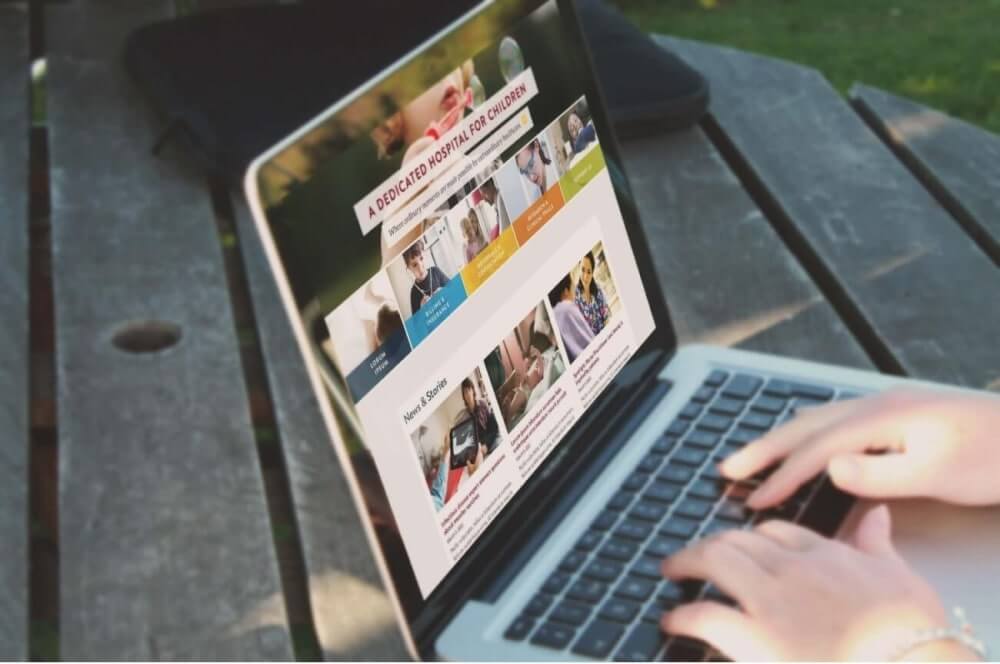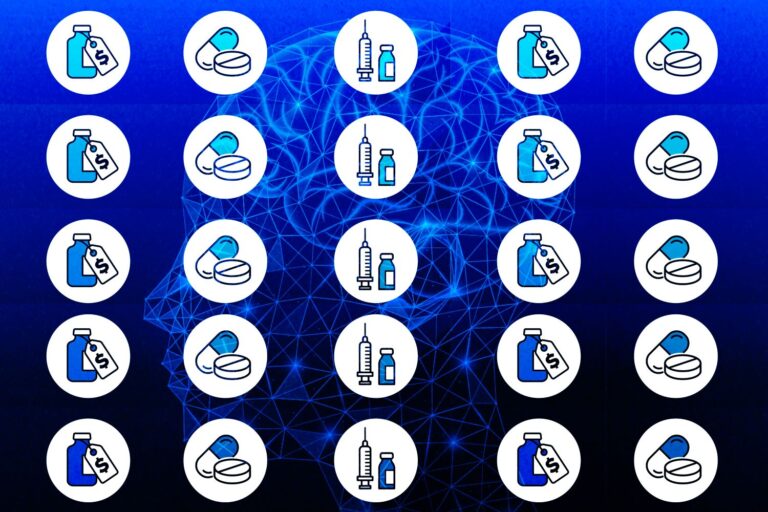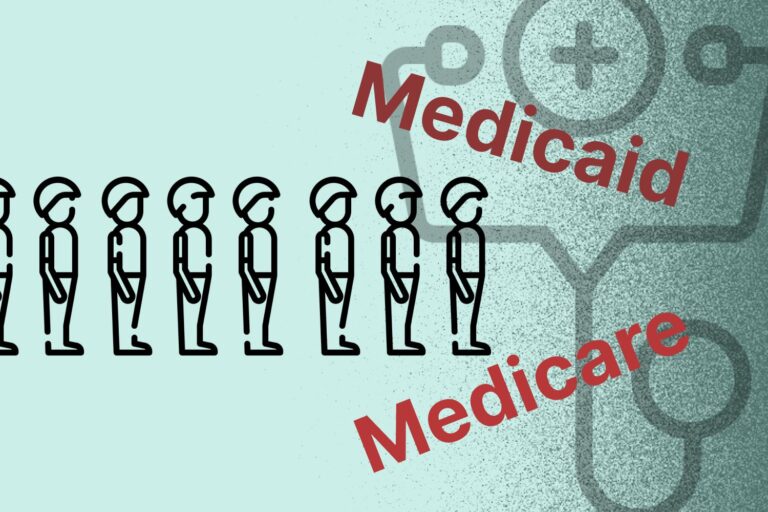Therapy Website: Tactics to Get off to the Flying Start
The online landscape is continually changing, and those who wish to keep up have to move fast. Following the evidence-based procedure as well as making decisions informed by data and trends prove to help you stay on top of, or even ahead of the ever-shifting current of digital marketing best practices.
That’s particularly right in case of physical therapists who desire to win customers’ trust through their own websites. Let’s hit the ground running with our actionable tactics for building the cutting-edge therapy websites in 2019.
Best Practices For A Modernistic Therapy Website
Besides basic website design tips such as the company’s logo placing or font choosing, there exist some simple yet powerful tactics to establish a solid online presence.
1. Utilize White Space
Have you ever visited a website which is so jumbled, or visually confusing that you wish nothing but instantly navigate back to your Google results page? And in contrast to that experience, have you taken a look at a visually clean website that only put a few words in front of you at a time?
Which one was easier to browse? Which one inspired your trust?
In fact, the Journal of Advertising Research’s findings revealed that visual crowding increases a viewer’s negative attitude toward advertisements and online content contributing to the clutter.
With that in mind, mastering how to utilize “white space”, or blank space, in your therapy website is never a bad idea. The truth is that the strategic use of white spaces has become so popular that its application is now almost formulaic. Incorporating such minimalist design not only results in much easier navigation but also signals to potential clients that you keep your website up-to-date, possibly encouraging them to contact you for a future appointment at your physical therapy office.
2. Deliver Brand Consistency
The very first questions arise: How is a particular website considered to be wholly consistent in terms of brand? And does it really matter when it comes to your therapy website?
As a website’s theme, mission and its UVP (Unique Value Proposition) are clearly defined throughout its mass of pages, it may be said that such a website has a consistent brand.
In fact, consistency across a website is something that every single business owner should aim for, whether you are a single private practice owner with a small local brand or manager of a group practice of twenty professionals. Why?
Based on the Journal of Product and Brand Management, brands which maintain higher levels of consistency prove to be perceived as more authentic.
When your brand is consistent, site visitors, which are also your potential clients can more easily digest all pieces of content that you’ve invested effort into putting out there. A strong personal brand inspires creditability and trust, which are amongst the primary ingredients in a strong therapeutic alliance.
When it comes to building your brand, it’s a “must” that you create a step-by-step website style guide and strictly stick to it. A style guide may include not only visual elements such as website formatting and color but also rules around spelling, grammar structure, and even word choice. For instance, you might choose to refer to “mental illness” as a mental health “issue” or “concern” in an attempt to reduce stigma around that topic. In the process, you are presenting to prospective clients your subtle dedication to a non-pathologizing approach in therapy.
3. Build Responsive Therapy Website Design

In such an ever-evolving digital era, responsiveness is a “must” for every single website -and your therapy one is definitely not an exception. If your website isn’t responsive or in particular, mobile-friendly, you’re behind the times. Why?
Simply because in the year of 2017, mobile minutes spent online in the USA comprises of around 71% of the total digital minutes spent, which has a tendency to increase a lot more the following year. This figure speaks volume about the necessity of having a responsive website design.
For those who are not familiar with the term “responsive therapy websites”, here it is in a nutshell: Responsive Web Design is the approach that suggests that design and development should respond to the user’s behavior and environment based on screen size, platform, and orientation.
Furthermore, this is especially important with Google’s indexing change in March, where it was officially announced that Google will crawl and index websites from the perspective of a mobile user instead of a desktop user.
So, imagine what will happen if your site visitors have a bad mobile experience? Your rankings, as well as new bookings for your therapy services, are going to drop like flies. As a result, you are leaving all your efforts and money on the table!
4. Optimize Your Site Speed
Loading speed is one of your very first opportunities – not only to leave a good impression on those who visit your website seeking physical therapy, but also to retain them. As fore-mentioned, more and more online users access the internet using smartphones; thus, mobile page load time is yet another key consideration.
According to Google’s latest research, the time it takes to fully load an average mobile landing page is 22 seconds. Staggeringly fifty-three percent of people, however, will leave in search of a better site if it takes more than 3 seconds to load on their phone. This statistic speaks volumes for the crucial importance of site speed in reaching potential clients, especially those searching for immediate help.
If you’re yet to be convinced about the vital significance of loading speed, here is an example for you – the case of Amazon:
- A 1-second website load delay on Amazon would cost $1.6 billion in sales.
- An extra 0.5 seconds in search page generation time would drop traffic by 20% for Google.
That being said, the data speaks for itself: Slow websites = fewer patients.
Acknowledging its decisive role, how could you, as a therapist, do to improve your therapy site speed?
In fact, there remain a myriad of ways to reduce page load time on your site, among which a few commonly cited methods include browser caching, reevaluating the sizes of the images you use, and utilizing content delivery networks (CDNs).
All of these things seem too confusing and somehow overwhelming for such a healthcare professional as you? Don’t panic! In our Internet-centric era, a quick Google search can enable you to explore how you can boost your site speed in a simple yet effective manner. Let’s have your therapy site go though some speed test and carry out all the recommended improvements!
5. Employ Storytelling Techniques
If you have been in the online world of content building for a little while, you probably come across the concept of storytelling as an effective way to connect with your audience, readers – or your potential clients.
When it comes to web content creating, storytelling for therapy professionals performs a couple of key functions:
- A personal approach makes it easier for those, who seek mental therapy to feel comfortable, to reach out to you
- From marketing’s perspective, such an authentic approach of story-telling has been proven effective, particular in case of the Millennials or young adults.
In fact, one straightforward way to incorporate storytelling into your digital marketing approach is to pay your “About Me” page the attention it deserves. Always be sure that you’re informing your potential clients with relevant information which helps them understand who you are and why you’re passionate about what you do.
6. Craft An Easy-To-Use Contact Form
Actually, the degree to which your website makes you accessible may be one of the most influential factors in whether your site visitors become your client. With that in mind, it’s imperative that you craft a strong calls-to-action (CTAs) throughout your site – as well as a clear and easy-to-use contact form. No matter how simple these ideas seem to be, these prove to greatly improve the likelihood that people will reach out to you.
Don’t know exactly how to create a winning contact form for your therapy services? Here is an actionable tip for you.
Always bear in mind that “simplicity is the best”. Let’s simplify the web experience for your potential clients by including brief and easy fields for them to fill out. Plus, it’s advisable that you include some pre-written options in the form of checkboxes or radio buttons. Whereas shouldering too much of the “workload” may be frowned upon for therapists in an emotional sense, simplifying the user experience can make individuals more likely to reach out to you and ensure contacting you will require very little exertion on their part.
Gallery Of The Best Therapy Websites
Finding great therapy website design inspiration can be a struggle, especially when you’re a complete newbie to the world of digital marketing. Fortunately, this is no longer your concern. Let’s go through our pick for the most stunning therapy websites to get off on the right foot.
#1 Thrive Works Therapy
The very first interesting example is the Thrive Works Therapy Website.

One impressive element of this site is a great video background. Usually, having a video that plays as the background for your hero image is not recommended as it can really slow down the load time for your website. However, in Thrive Works Therapy’s case, they did it and it is actually very effective, proving that there is an exception to every rule! Not only do these brief videos not slow down the site speed, but they also successfully create a dynamic and engaging atmosphere.
Furthermore, they do a great job with having a dual call to action right there in the hero image. Besides one button inviting people to call the office, there is another button for scheduling online, which is great to reach out to different people with different insights – some would prefer to talk to a human being whereas others want to do everything through the computer.

Last but not least, the chat option is another fine quality of this therapy website. It’s well-proven that chat boxes increase engagement with website visitors by a huge percentage and having it as an option on this site makes the site a lot stronger.
Speaking of chat option, if you’re going to have one for our site, you have to actually make sure that you have someone who is being very diligent to be responsive to people contacting you through that way. That being said, the chat option is something you can only do if you have the resources and the staff to really be able to keep that current and provide that service consistently.
#2 Mary DiOrio
The great point of this therapy site is that it well represents an emotional feeling by utilizing visual elements.

The very first impression this website leaves on visitors seems to be a gorgeous hero image. Being pretty bright and hopeful, this image conveys a message that they are in a place that will be uplifting and inspiring. Besides such heart-warming image, the colors used on this site are lovely and consistent – the various shades of blue range from calming to vibrant also deliver a sense of peace for even those who visit this site the first time.
The use of the cursive font throughout this site is also a big plus point. It isn’t overdone, and the cursive is actually legible, which is the pitfall that several fancier fonts can sometimes fall into. It successfully brings a nice sense of personality to the whole site.

Moreover, its specialties are clearly defined – Mary plainly states what her areas of focus are, presents them in a way that is visually pleasing and upbeat, and has a clear call to action for each one.

Any possible improvements for this site? It’s highly recommended that a phone number is put right at the top corner of the homepage. No matter how simple this seems to be, positioning contact number at such a remarkable place is super powerful, especially in case of patients seeking for immediate help.
#3 Dr. Cassandra Sharp, DPT

Like the above example, this therapy website delivers a personalized “look and feel”. The site reflects Cassandra’s whole-body approach to therapy. Actually, almost the images offer you a very clear picture of the kind of approach to wellness that you get when working with Cassandra. The inclusion of her personal photography, as an expression of her commitment to travel and health through movement, is a great addition to the site.
Another noteworthy point of this website is the clever use of small animations, whichsuccessfully create a dynamic feel and add interest, without being overpowering or distracting from the site’s content.
Also, Cassandra crafts a CTA inviting people to sign up for her newsletter, which is great! However, it’s better if some sorts of concrete incentive (such as free downloadable resources) are offered so that more and more people will be willing to subscribe to. Plus, as this site offers a number of therapy classes, it’s advisable that blog posts are built, in which there are class descriptions going into detail about what each class is like and how individuals would benefit from taking it.
#4 Southern California Counseling Center (SCCC)

The uniqueness of SCCC’s site is the unusual yet attention-grabbing hero image. The idea of making it possible for anyone to envision themselves coming to them as a client, by having the client represented with a drawing, is extraordinarily original. Plus, the combination of the real photo with the drawing is very compelling and trendy.
Besides eye-catching visual elements, the “Who We Are” section on their home page is really beautifully put together. In contrast with other sites with a ton of headshots and overwhelming descriptive information, this practice has designed an aesthetic graphic taking a number of photos of different people who work there, creating something that is really warm, interesting and inviting. None of these photos are boring or overly formal headshots. Rather, each one of these is distinct and really shows you some of the personality of the person who’s being photographed.

What’s more, the inclusion of a video on the SCCC’s home page performs a great role. Such video is very professionally done and does a good job of giving some of the histories of their sensor and talking about who they are and their commitment to the work that they do.
Using a slider with three different hero images that rotate seems to make this therapy site somehow different. However, it’s better if this slider is removed. Why? Studies have suggested that sliding images like that can actually reduce the likelihood of a website visitor actually taking action on the page. This may be because it encourages people to kind of sit back and possibly watch all the pictures cruel by. With that in mind, it is imperative to pick just one of those three images and then use that as a focal point for the home set homepage.
The Bottom Lines
With fiercer and fiercer competition in healthcare industry, establishing a solid online presence with your own stunning website is no longer just an optional bonus but
the vital prerequisite. Let’s start off your journey of building a modern therapy site with these simple yet super-powerful tips!
You’re a complete beginner to the digital world and find those things too overwhelming to handle on your own? You’re being too busy with all the therapeutic tasks and have no time for other concerns? Don’t panic! We’re more than willing to lend you a helping hand. Should you need any help with a dedicated team to get your therapy services exposed to the digital world, don’t hesitate to get an online presence manager.









